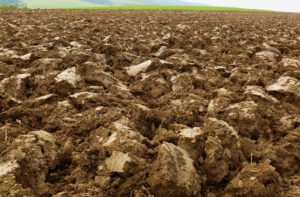New Documentary Explores the Important Role of Healthy Topsoil on Earth
- NPG
- October 5, 2020
- NPG Commentary
- 0 Comments
October 6, 2020
Could Alternative Farming Methods Help Preserve & Regenerate the Earth’s Topsoil?

There is a new environmental documentary streaming on Netflix. Based on a book with the same title, Kiss the Ground is all about topsoil. Narrated by actor and activist Woody Harrelson, the documentary showcases the benefits of regenerative agriculture and posits by using this method we can reduce the impact of farm and ranch agriculture on the climate.
Described by LA Times reviewer Kevin Crust as optimistic, the film prescribes the many changes we (humans) can make to reverse some of the damage caused by generations of over-farming. Crust summarized the overall message, noting: “There are small things we can do as individuals: eating a more plant-based diet, composting and applying the bigger principles to our own small gardens. But the big sell is regenerative agriculture, which offers an economically viable virtuous cycle of healthy soil, plants, water and skies, in stark contrast to the vicious cycle of industrial agriculture, which relies on additives, pesticides and government subsidies and depletes the land at unsustainable levels.”
Excerpts from the film include:
“Every year, for every American alive, 3 lbs. of toxic chemicals are sprayed onto the food grown on our farms.”
“As soil turns to dust around the world, every year 40 million people are pushed off their land. By 2050 it’s estimated that one billion people will be refugees of soil desertification.”
“More than 20 civilizations, in all regions of the world, have failed because of agriculture damaging the environment. Their communities could not handle the deteriorating environment and the rising population.”
“Poor land leads to poor people leads to social break down. Poor land leads to increased frequency of floods and droughts and mass immigration across borders into cities.”
Taken as a whole, the message of the documentary is that current commercial agriculture practices (such as tilling and the use of chemical sprays) increase carbon in the atmosphere. It also makes a point to convey that there are other ways to grow crops and raise livestock without degrading the earth’s topsoil and highlights the importance of using sustainable methods to regenerate the earth’s topsoil and preserve it for future generations.
The connection between deteriorating cropland and a constantly-increasing population should be apparent to anyone concerned with the environmental future of our country, and the world as a whole. If we face serious struggles now, with a U.S. population of 331 million people, how will we manage to properly supply more people – possibly 400 million or even more – with adequate nutrition in the future? As author Leon Kolankiewicz said in his 2015 NPG Forum paper The Other Soil Erosion: Long-Term Erosion of our Productive Farmland Base from U.S. Population Growth:
“The irony is that total U.S. farmlands and cropland per capita are shrinking precisely because the tens of millions added to our population every decade are competing with farmers for water and for the very same land that is best at growing food. As population increases and sprawls across flat, arable land, the ability to feed that population decreases. Because they tend to have good soils and are easy to build on, flat lands with access to fresh water attract both agriculture and urbanization. When homes can be built to house hundreds of new residents on the land occupied by a single farm, in a market economy like America’s, urbanization will displace agriculture every time as ‘the highest and best use.’”
We encourage you to review that paper for deeper insight on this important topic.
As said in the film: “Soil and the planet and the climate are all connected.”
MAKE A GENEROUS CONTRIBUTION TODAY!
| [WD_Button id=18412] |

